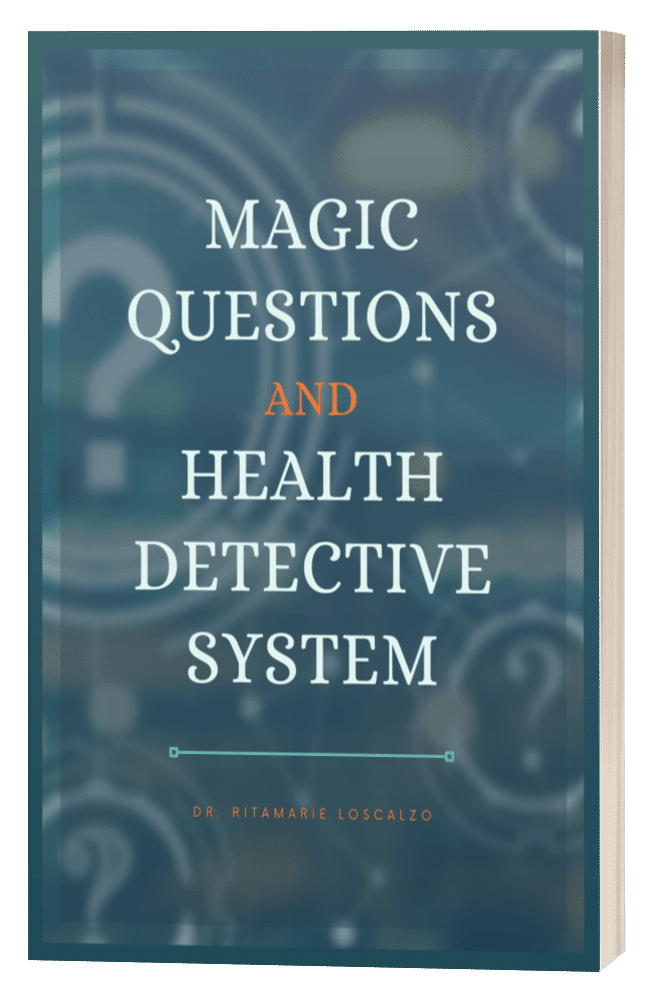
In Vitamin D: Are You Getting Enough? I talked about the role of Vitamin D and why we are finding such an epidemic of deficiency in our modern world. The widespread use of sunscreen in an attempt to protect you from basal cell carcinoma, one of the easiest to treat cancers, increases your at risk for more serious disease, like colon, prostate and breast cancer.
Part 1 of a two part video series about Vitamin D discussed the role of vitamin D and why it’s important to test.
Today’s video shares how to interpret the test and bring your blood Vitamin D level up to a range that helps protect you from cancer, osteoporosis, autoimmune disease and a whole lot more.
[yframe url=’http://www.youtube.com/watch?v=TcOqfr1SJKY’]
It’s easy to get your vitamin D tested. If you don’t have a practitioner, or your doctor is unwilling to order the test for you, you can order it yourself through Direct Labs, an online testing service that allows you to take charge of your health and order your own blood tests.
If You’re Suffering from any of the Issues listed Below, Get Your Vitamin D Level tested Right Away.
- Obesity or excess bodyweight
- High blood pressure
- Osteoporosis and osteopenia
- Autism
- Autoimmune conditions (such as Hashimotos, lupus, ankylosing spondylitis, multiple sclerosis, rheumatoid arthritis)
- Cancer
- Depression
- Asthma
- Migraines
- Cystic fibrosis
- Diabetes(both types 1 and 2)
- Multiple sclerosis
- Schizophrenia
- Epilepsy
- Osteoarthritis
- PCOS (polycystic ovarian syndrome)
- Musculoskeletal pain, including joint pain and low back pain
- Muscle weakness
- Poor balance
- Systemic inflammation
- Fibromyalgia
Simple Strategies for Improving your Vitamin D status
- Get outdoors and enjoy the sunshine for at least 20 – 30 minutes a day during, preferably when the sun is highest in the sky.
- Avoid sunscreen for a full 20 – 30 minutes.
- Expose your arms and legs. You need to expose 40% of your skin to make sufficient Vitamin D.
- Be sure to avoid washing the exposed parts with soap for at least 48 hours to give your body a chance to absorb all he Vitamin D it produced as a result of the sunshine exposure.
- Get tested for vitamin D. The 25, hydroxyl vitamin D test is the one most commonly used.
- Supplement with Vitamin D if you’re low.
Vitamin D Levels — what’s optimal?
| >100 ng/mL | Excessive vitamin D |
| 75-100 ng/mL | Proposed optimal range |
| 50-75 ng/mL | Suboptimal |
| <50 ng/mL | Deficient |
| <20 ng/mL | Seriously deficient |
Remember, it’s important to test.
If you decide to skip the test and just supplement with 2000-4000 IU you run the risk of not correcting the problem. If you supplement with 10,000 – 20,000 without testing, you run the risk of vitamin D excess.
It’s important to work with a trained practitioner. Fortunately it doesn’t have to be one on one anymore. I’ve pioneered training people to assess themselves with my guidance in cost-effective group programs, where you do the assessment and can ask me questions to guide you. The program is called Assess Your Own Body Chemistry and it’s intended to teach you to read your own body’s signs, symptoms and lab tests so you can create a nutrition plan customized to your needs.
Additional reading on Vitamin D from Dr. Joe Mercola
[1] Mercola.com “Daily Sunlight Can Keep Cancer Away” August 7, 2008
[2] Mercola.com “Lack of Sunshine Causes One Million Deaths a Year” August 24, 2007
[3] Dr. Joe Mercola Comments How Much Vitamin Do You Need?
[4] Video by Dr. Joe Mercola. 1 hour video with lots of details about Vitamin D
Medical research papers on the Vitamin D cancer connection
[1]Annals of Epidemiology April 14, 2009 Dr. Cedric Garland
[2] Annals of Epidemiology July 2009, Volume 19, Issue 7, Pages 468-483
[3] Science Daily, “New Model of Cancer Development: Low Vitamin D Levels May Have Role” May 26, 2009
[4] The Journal of Steroid Biochemistry and Molecular Biology March 2007; 103(3-5):708-11
[5] American Journal of Clinical Nutrition June 2007; 85(6):1586-91.
[6] American Journal of Epidemiology October 12, 2007
Question of the day:
Have you been tested for Vitamin D yet? If yes, what was your level? How much are you supplementing if low?
COMMENT BELOW and LET ME KNOW if you’re supplementing and what your level is if you’ve been tested recently.
With Love and Gratitude,
Dr. Ritamarie
Share this:

Are you feeling stuck?
Do you feel as if something is missing from your practice that's keeping you from delivering breakthrough outcomes for your clients?.
Recent Posts
Our Programs
Nutritional Endocrinology Practitioner Training (NEPT)
The Mastery and Certification tier is our flagship program and provides everything you need to feel confident as a practitioner who knows how to get results that lead to healthy and happy clients.
Functional Assessment Mastery
Explore the relationships between the most important hormones and their relationship with nutrition.
Functional Nutrition Mastery
Learn how to support your clients to eat and supplement in a way that reduces and eliminates chronic symptoms.
Medical Disclaimer: The information on this website is not intended to replace a one-on-one relationship with a qualified health care professional and is not intended as medical advice. It is intended as a sharing of knowledge and information from the research and experience of Dr. Ritamarie Loscalzo, drritamarie.com, and the experts who have contributed. We encourage you to make your own health care decisions based upon your research and in partnership with a qualified health care professional.
Disclosure: Sometimes (but not always), when I share resources in my programs, newsletter, and on my website, I'm using an affiliate link, which means I do make money if you buy. My credibility is extremely important to me; therefore, I only endorse the products, services, and people I believe in. DrRitamarie.com is independently owned and the opinions expressed here are my own.
Click here to see our Privacy Policy.











Dr. Ritamarie,
I totally get the importance of Vitamin D levels. My question is, during the winter, is it ok to use tanning beds to supplement for the sun?
my concern with tanning beds is whether they are UVa or UVB. Some are only the rays that dont promote vitamin D and could be dangerous. Yu’d need to ask to determine
yes, I was tested and was found to be low so the doctor told me to take 50 thousand units once a month after an initial several weeks of taking it several times a week. I am still taking it monthly.
I was tested several months ago for vitamin D. I live in Europe, so I am not sure what the numbers mean. I think it said my level was 20 ug/l, and the optimal level is >30 ug/l. I am now taking vitamin D3, 4000 or 5000 units per day. I feel this has drastically helped my immune system. I should probably get tested again soon and see how my levels are now.
“Be sure to avoid washing the exposed parts with soap for at least 48 hours to give your body a chance to absorb all the Vitamin D it produced as a result of the sunshine exposure.” So how are we meant to shower if we don’t use soap?
[…] strong are your bones? If you’re like most people, you probably have no […]
[…] bearing exercise is key to improving bone strength as is exposure to daily sunshine or a Vitamin D […]